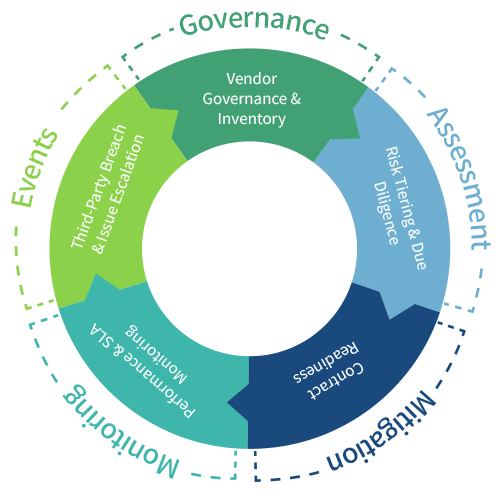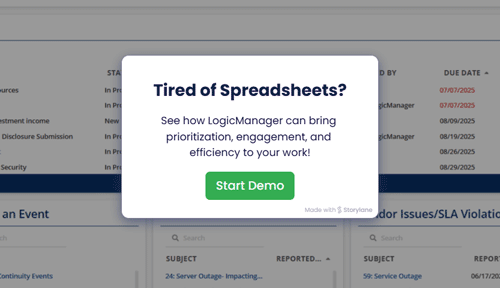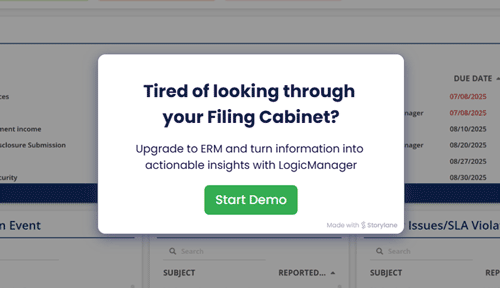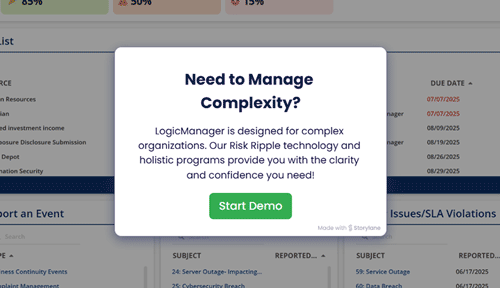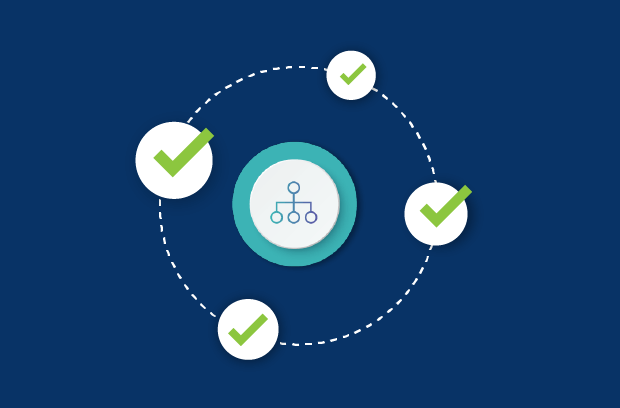Third Party Risk Management Program
Protect Your Reputation with TPRM Software
Built for procurement, risk, and compliance teams
Third-Party Risk Management
If managing third-party risk feels like you’re constantly chasing updates across silos, or uncovering issues only after they’ve escalated, you’re not alone. Vendor oversight is complex, and when even one relationship falls through the cracks, the ripple effects can impact every part of your business. Our TPRM Program takes a holistic, risk-based approach—giving you clarity, control, and confidence across the entire third-party lifecycle.
Built for procurement, risk, and compliance teams, this program helps you focus on what matters most, engage the right stakeholders, and surface the insights that tie vendor health to enterprise performance. It operationalizes vendor governance, streamlines onboarding and due diligence, and enforces contracts aligned with your organization’s risk appetite.
With centralized oversight and monitoring, you’ll stay ahead of issues—transforming reactive clean-up into proactive assurance.



Where Are You in Your Risk Journey?
No matter where you’re starting from, we meet you there—and take you further. Choose the path that sounds most like you and watch how LogicManager transforms your approach to security and governance.
You’re manually updating rows and fighting fires with every audit. Watch how LogicManager helps you replace chaos with clarity—and get back hours in your week.
You’re logging controls and assessments into a passive system with no real follow-through. See how LogicManager turns your governance into performance.
You’re manually updating rows and fighting fires with every audit. Watch how LogicManager helps you replace chaos with clarity—and get back hours in your week.

Engaging Teams, Roles and Responsibilities
Third-party oversight requires input from across your organization—from risk and legal teams to procurement, IT, and business units. LogicManager supports unlimited users with role-based access, making it easy to engage every stakeholder while preserving separation of duties.
By clarifying ownership, standardizing workflows, and connecting teams through a shared platform, LogicManager eliminates friction and ensures your third-party risk program is transparent, efficient, and defensible.
Your Roadmap to Third-Party Risk Management Success
Turning Activities Into Actionable Intelligence
This isn’t just visibility—it’s intelligence that drives performance.
Most third-party risk systems focus on intake and documentation—but they leave you scrambling when something goes wrong. LogicManager’s platform is built to do more: to surface hidden risks, connect critical information, and make it easier to act when it matters most.
Our Risk Ripple Intelligence connects the dots between vendor assessments, risk tiers, contracts, performance metrics, incidents, and mitigation efforts. When an issue arises—such as a failed control or missed SLA—you immediately see what’s impacted, who’s accountable, and what needs to happen next.
Insight Workbenches and audit-ready reports give you real-time visibility across the third-party lifecycle. So whether you’re preparing for a board review, responding to a regulator, or managing an escalation, you’re not digging through systems—you already have the answers.

Request a LogicManager Demo

Discover how LogicManager’s Third-Party Risk Management Program helps you govern vendor relationships with confidence and control.
Speak with a risk specialist today to prevent fraud, waste, and negligence across your third-party ecosystem—before they impact your business.

